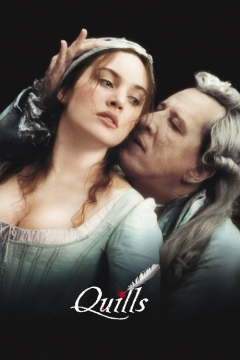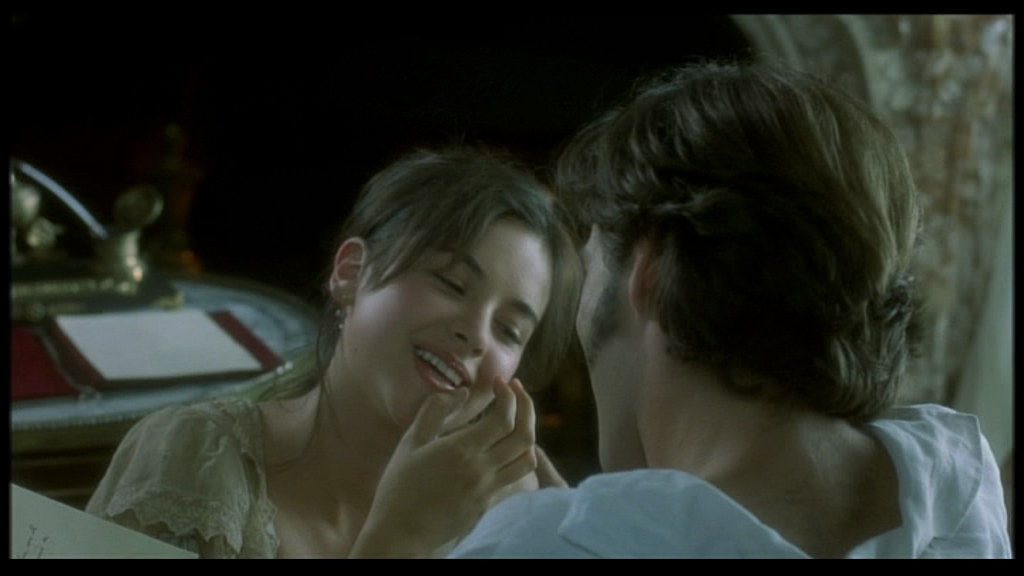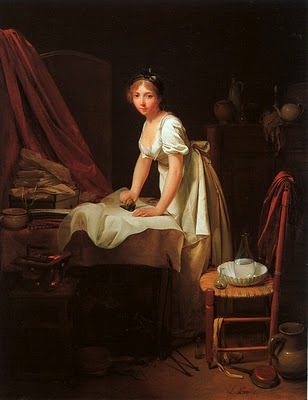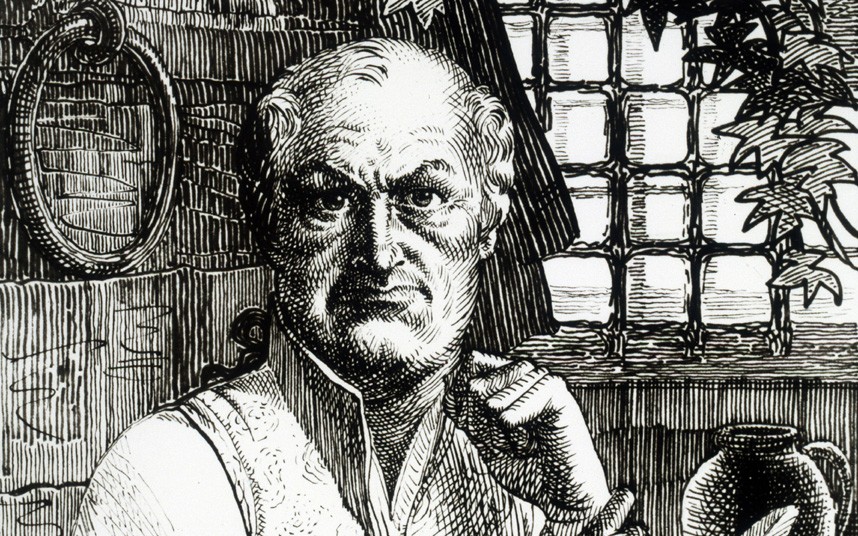
Quills (2000) is one of the more surprising films I own. It hosts an all star cast featuring Kate Winslet, Joaquin Phoenix, Michael Caine and Geoffrey Rush, it did well at the box office and gained mostly positive reviews, yet I have yet to meet anyone who has ever heard of it.
The film follows loosely (very, very loosely) the imprisonment of the Marquis de Sade in Charenton Asylum, which historically occurred in the early 1800s. To give you some context (and because I really enjoy reading around de Sade): Donatien Alphonse Francois, Marquis Compte de Sade lived between 1740 and 1814 in France (gosh, really? I hear you gasp) and is one of the more controversial figures in history.
De Sade, through his writings and behaviour, promoted ideas of extreme freedom that were to be unhindered by the law or even basic morality. He is especially known for his written works which present sexual fantasies characterised by violence and blasphemy. His violent sexual preferences were not restricted to paper and much of his life saw numerous prostitutes and employees of both genders complain to the authorities about sexual abuse. (You may be interested to know that it is from de Sade’s name that we gain the words ‘sadist’ and ‘sadism’. What a nice thing to be remembered for.) As a result of his scandalous behaviour his wife separated from and eventually divorced him, while his mother in law acquired a ‘lettre de cachet’ allowing for de Sade to be imprisoned, while his family paid rental costs to the prison.
Although he would be later released, during which time he ingratiated himself with revolutionaries, he was imprisoned again on Napoleon’s orders for his earlier publication of deeply pornographic and blasphemous writings. After petitioning by his family, de Sade was declared insane and spent eleven years at Charenton asylum before his death in 1814. He continued to write and lived in Charenton with his long time lover Marie-Constance, though he also took lovers in one of the Charenton employee’s young sons and a teenage laundress.
When I bought Quills I was intrigued. It is set during the Marquis’ years at Charenton, and yet I knew from reading, that Charenton marked very much the end of de Sade’s writing career and so I wondered what exactly the film would be about. De Sade’s final years were mellowed compared to the violent boisterousness of his youth. I did not have to worry though, as this film is not about the Marquis de Sade. Geoffrey Rush plays the protagonist, but the Marquis shown here is so far removed from the man of history that they might as well be different people.
That is not to say that the film is not interesting in itself. It explores themes of sexuality, pornography and above all censorship to great effect. The progressive gradations of censorship in the film are of especial interest as they can be explored in greater extremes, than a film set in a normal societal setting. In the film, de Sade smuggles out his novels, most notably, the inflammatory Justine, through the laundry maid Madeleine (Winslet). While the publication of Justine sparks a censorship campaign against the Marquis, the book also impacts others both inside and outside of the asylum. Inside, issues of his treatment are raised with the asylum receiving a visit from the
Doctor Royer-Collard (Caine) who overturns the current overseer, the Abbe de Coulmier’s (Phoenix) kind hearted, somewhat enlightened approaches to mental health in favour of harsh punishments and torture for misbehaviour, with obvious ramifications for the other inmates of Charenton.

On the outside, people who read his books discover a new kind of sexuality, at odds with the strictly religious views they have been brought up with and either embrace or repress it, again with lasting repercussions. The acting is, unsurprisingly, superb and the contrast between Caine and Pheonix’s respective methods are starkly different, not just practically but in how the characters relate to their charges. I will be honest, I really dislike the latter half of the film, but it does at least continue the themes to their logical conclusions.
Authenticity vs Accuracy

Authenticity all the way! The film is far more authentic than it is accurate. The costume design and surroundings certainly create the feeling of post revolution France. Very little of the film occurs outside of the asylum and so it is perhaps easier to maintain an authentic atmosphere in such a small set. I was impressed, especially, at how the daily cleaning of the asylum forms the backdrop to the story and so just out of shot you will occasionally glimpse a maid performing menial cleaning tasks.
In terms of accuracy, we can stretch as far as there was a Marquis de Sade, he did spend some time at Charenton under the Abbe de Coulmier and he did write a book called Justine. That is about it as far as accuracy goes. The film suggests that de Sade suffered from mental problems and was unhealthily obsessed with the act of writing, of which there is no evidence. It shows him imprisoned during the ‘Reign of Terror’ 1793-1794, where he watches the nobles being executed under his window, whereas historically he was not committed until 1803. Justine was published in 1791, several years before the film claims and so could not be responsible for the chain of events that form the main storyline, which is completely fictional anyway. If you would like to read a more detailed analysis of the inaccuracies, de Sade’s biographer Neil Schaeffer wrote an article in the guardian upon the film’s release which can be read here.
Ultimately the film is more an exploration of its chosen themes through the medium of de Sade’s writings rather than the historical character of de Sade himself, however Rush delivers an excellent portrayal of a mad writer, even if the mad writer was not an historical person, and the film is quite good overall.













